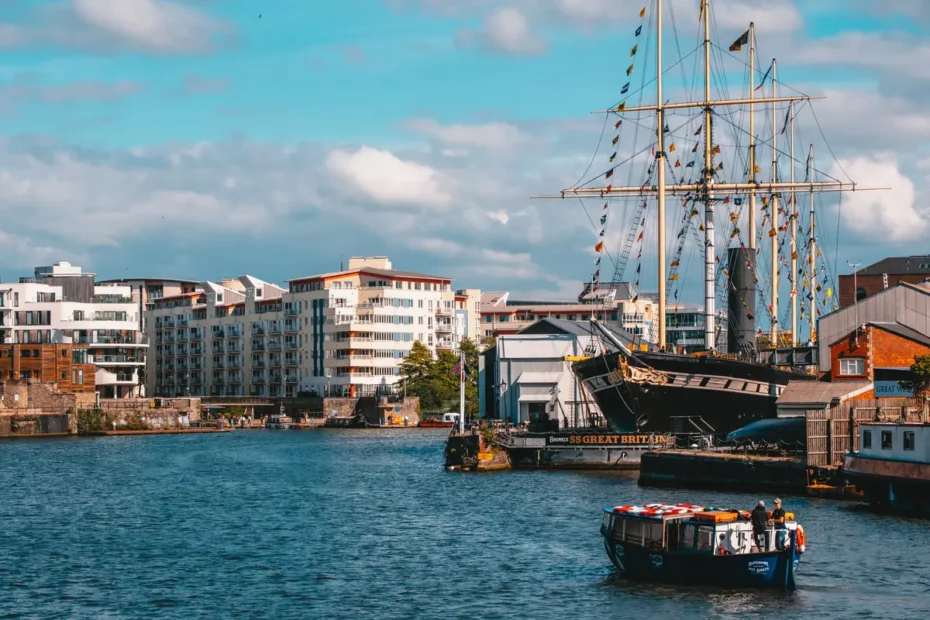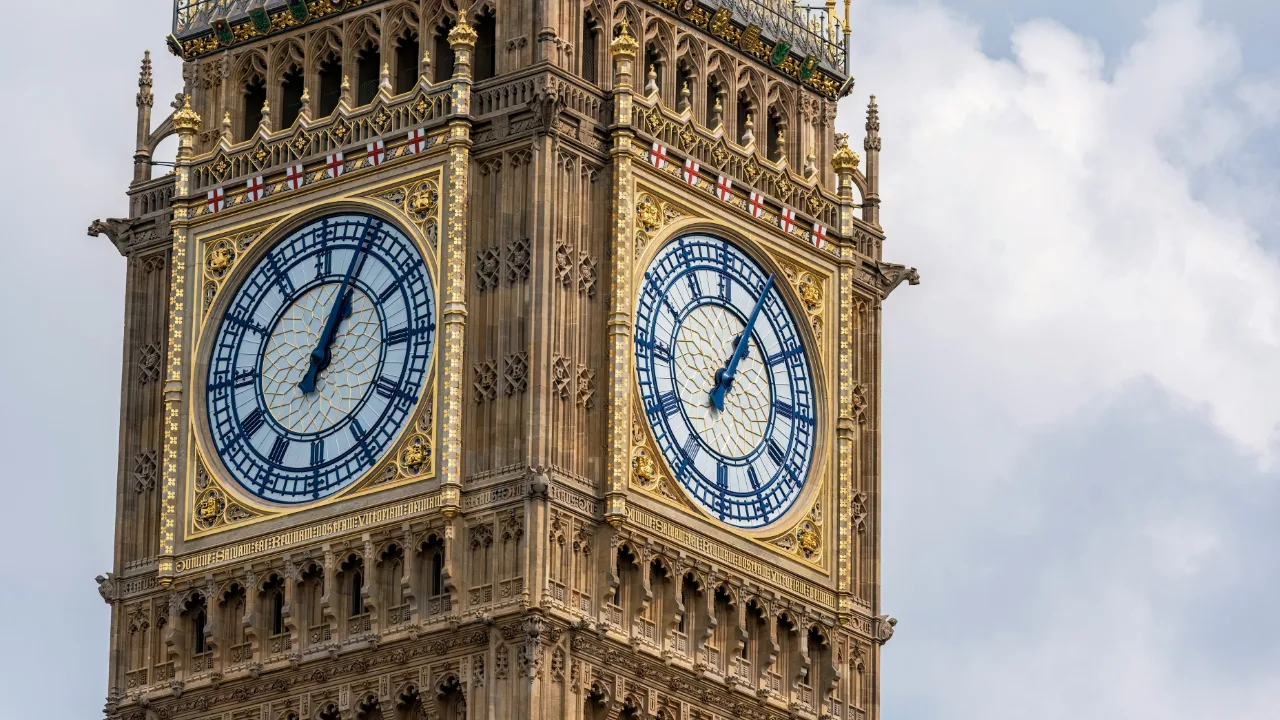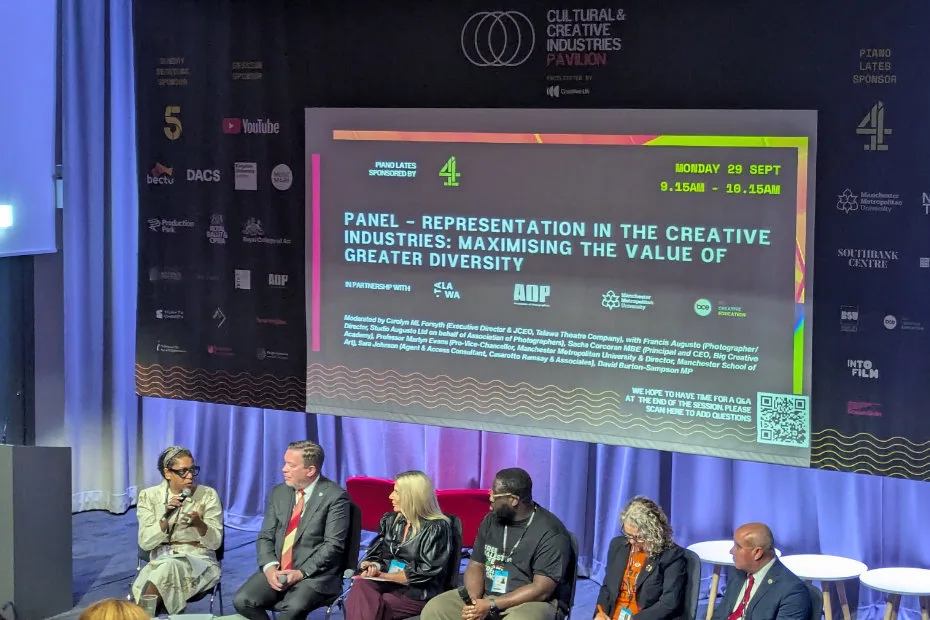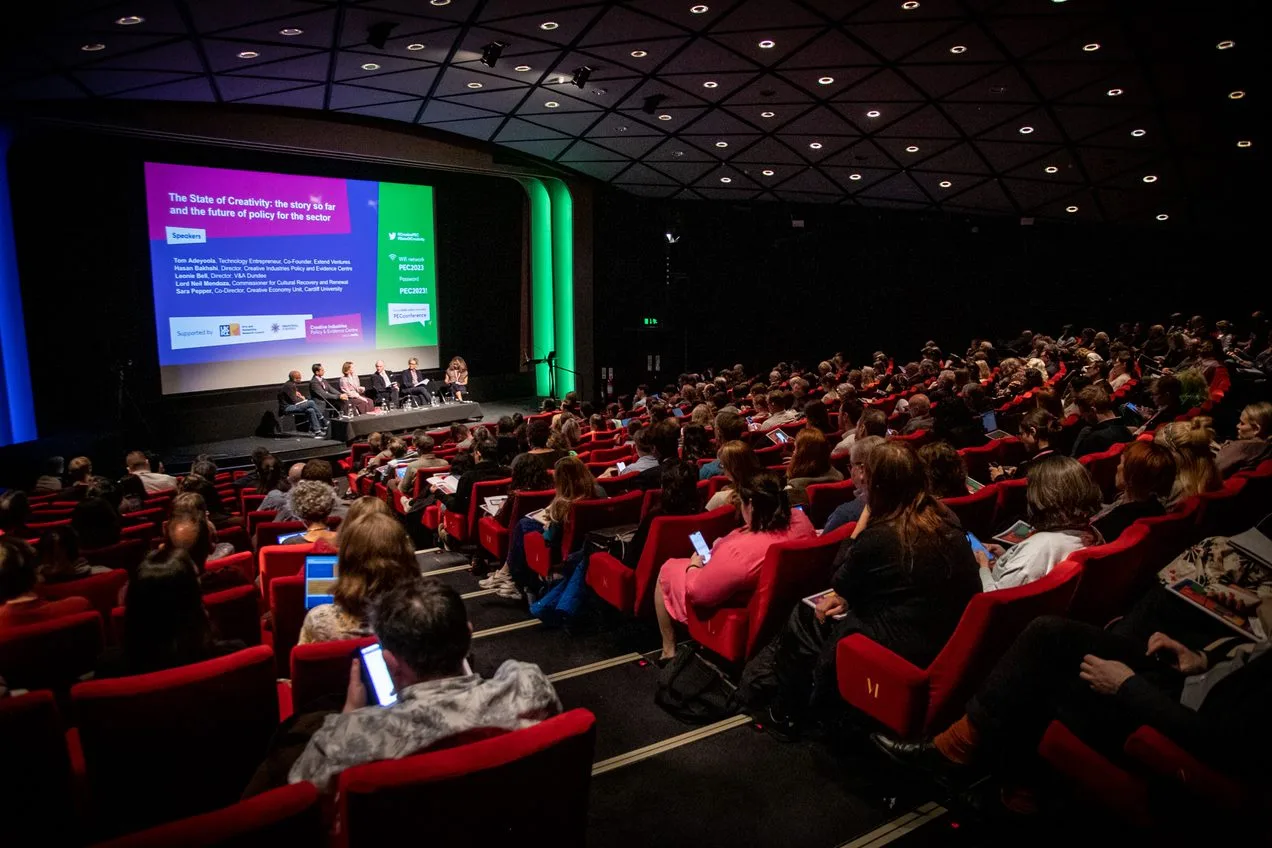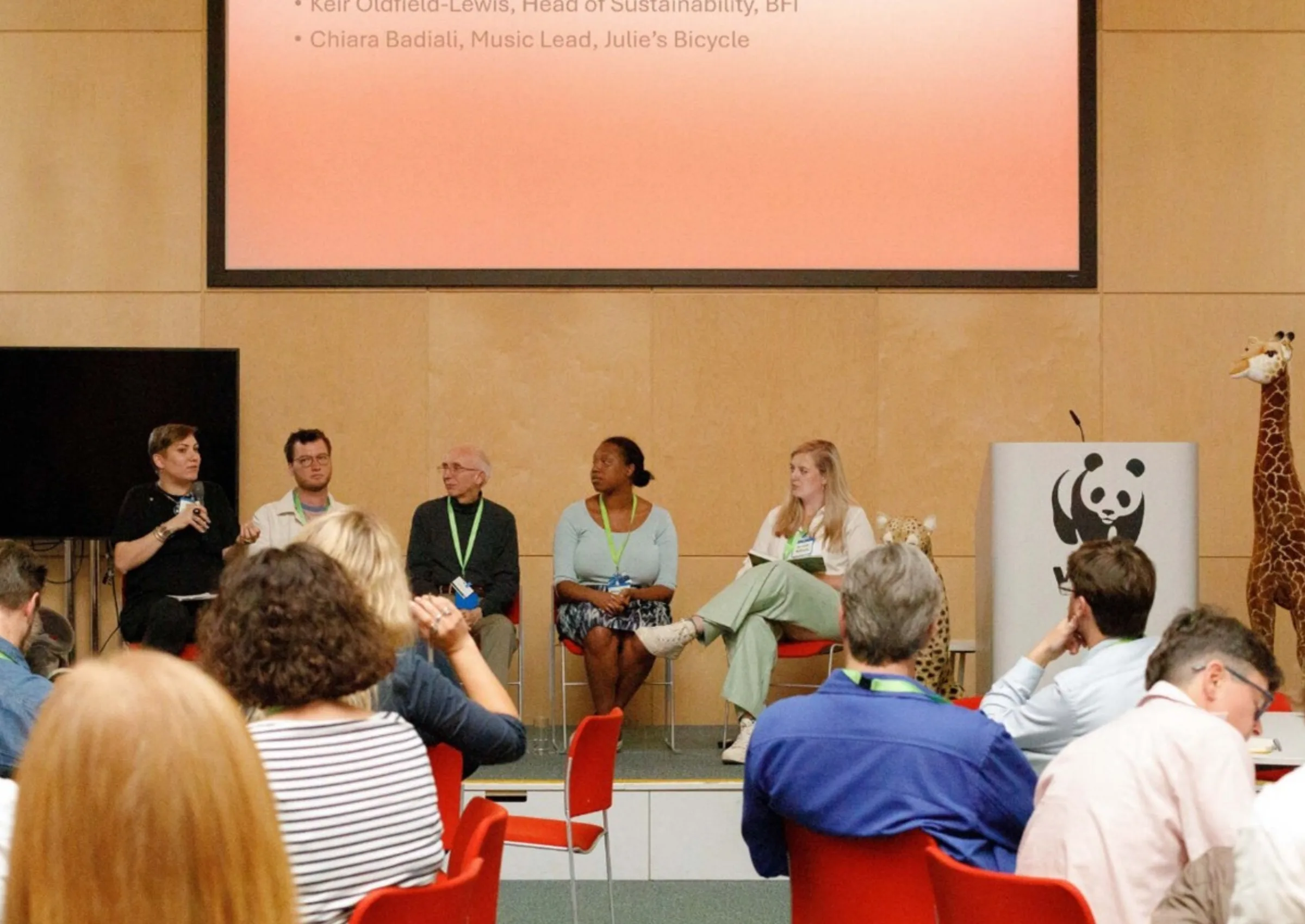What are the Creative Industries?
The Creative Industries are a diverse and complex sector made up of a variety of sub-sectors, from performing arts to computer games, and graphic design to advertising. This diversity is spread across the UK, with different places having very different characteristics. If you want to see some real life examples, we have put together some case studies demonstrating the varied nature of creative clusters. And if you want to dig deeper into the numbers, we have published the definitions and key national stats about the Creative Industries as part of this project.
It isn’t possible to design a catch all policy that will suit each local authoritiy that wants to invest in the sector. That is why it is useful for local policymakers to spend time learning about the make-up of their region’s Creative Industries. We provide some initial suggestions about how they might do so with some first steps on how to research your local Creative Industries.
However, PEC research, and the daily experience of anyone who works in the Creative Industries, shows us that the sector has some core characteristics that all local authorities should be aware of. These are outlined below:
- Creative businesses have a positive knock on effect on the places around them
- Creative business can be found in unexpected places
- A huge proportion of the creative workforce are freelancers
- The Creative Industries has many higher education graduates but suffers from skill shortages
- A lack of diversity is holding the Creative Industries back
- Investment in innovation is critical to success of the Creative Industries
- Businesses in the Creative Industries are young, growing and ambitious – but poor access to finance means they risk running out of steam
- The UK’s Creative Industries are valuable and competitive on the global stage
This page should not be read as an exhaustive list of the characteristics of the sector. The enormous range of critical challenges and opportunities relating to the sector is indicated by the wide range of themes covered by PEC research, and some sub-sectors or regions may have issues specific to them. Instead we hope it provides a useful starting place for those who want to understand this area of the economy better.
1 – Creative businesses have a positive knock on effect on the places around them
Creative businesses generate spillover effects, which are additional benefits to “places, society or the economy through the overflow of concepts, ideas, skills, knowledge and different types of capital” (European Centre for Creative Economy).
A report commissioned from the Design Council by DCMS in partnership with UKRI, (to be published in July) looks at the spillover value of the Creative Industries. It identifies four types of Creative Industries spillovers:
- Industry spillovers: where supply chain spending is triggered by Creative Industries activity.
- Knowledge spillovers: new ideas spread to other sectors, catalysing innovation, and improving other sectors’ ability to absorb innovation.
- Supply-side effects: where a facility or place attracts skilled workers and visitors – creating a virtuous circle through these workers and visitors increasing the value of that facility or place.
- Innovation effects: the creation of new knowledge in product and service innovation.
These spillovers can have a direct impact on employment in other industries. PEC research into the multiplier effect of creative businesses over the last 20 years suggests that each creative job can generate 1.9 new jobs in local services. That means that for every one new job created in the local creative sector, almost two additional jobs can be created in the wider economy
Alongside economic spillovers, the Creative Industries can also have spillovers into wider civil society, which can strengthen communities and improve individual wellbeing. Cultural heritage sites and local arts institutions bring enjoyment to visitors and locals, attract public funding and are sources of community pride, but their social benefits are relatively intangible and so hard to measure and value.
That is why at the start of 2021, DCMS published the UK’s first Cultural and Heritage Capital Framework. It sets out a way for the government to measure the value of culture and heritage to society, and has been designed to work using the same principles as the Treasury’s Green Book. The ambition is for this methodology to sit alongside other approaches to the valuation of culture (many of which were explored in the AHRC’s Cultural Value Project) and to provide quantitative evidence that may be particularly useful to policy makers making difficult funding decisions. This framework could be used, for example, to help provide a clear rationale for continued funding for a public arts institution.
Alongside the publication of DCMS’s Cultural and Heritage Capital Framework, the PEC has published new guidance, evidence and research on the economic value of culture and heritage. This guidance shows how to measure the economic value of a local museum, a regional gallery or theatre, and how much in monetary terms people value their cultural heritage.
For those interested in maximising the spillover impact of their local Creative Industries, the Design Council research will include a series of recommendations which may be of interest. They suggest local policymakers:
- Convene a group of representatives from the public and industry to set a vision, direct collaboration and gather data for impact analysis and communication.
- Create and support a place-based cluster that unites the Creative Industries with other sectors such as health and wellbeing, manufacturing, digital technologies, and priority sectors for net-zero.
- Provide guidance on the benefits of working with Creative Industries, which includes what to expect during a project’s life cycle and how to commission work.
- Wherever possible, encourage the embedding of creative skills at an early age within the education system. Highlight to parents and children the diverse creative career pathways within and beyond the Creative Industries.
- Upskill and bridge gaps in the current workforce to create a strong collaborative workforce, particularly within digital skills where this has formed barriers to cross-sectoral collaboration.
2 – Creative business can be found in unexpected places
Creative Industries research has historically pointed to the importance of large, city-focussed clusters. These are made up of significant groups of creative businesses which benefit from access to skilled staff and shared services, as well as the opportunity to capture valuable knowledge spillovers. While we continue to see the benefit of being in one of these large creative clusters, PEC research with Sussex University has identified hundreds of what we call ‘micro-clusters’ of creative businesses, inside and outside of larger clusters of economic activity. These micro-clusters are groups of over fifty businesses working in close proximity to one another that benefit from many of the phenomena seen in larger clusters, such as economies of scale and knowledge sharing. They can be found everywhere from rural Northumberland to urban Shoreditch.
Our research suggests that these micro-clusters could be important engines for economic growth. In 2019, companies inside a micro-cluster, particularly if they were in a rural micro-cluster, were more likely to have reported growth, and less likely to have experienced declining revenue, compared to companies outside of a micro-cluster. PEC’s recent research with NICRE (the National Innovation Centre for Rural Enterprise) looked specifically at these micro-clusters situated in primarily rural areas.
This is why the PEC has recommended that at a national and local level, policymakers should identify existing micro-clusters and support them to grow, particularly in places that are outside of the larger city-based clusters of economic activity. Have a look at this blog for some suggestions for how to go about doing that.
3 – A huge proportion of the creative workforce are freelancers
Compared to the rest of the economy, the Creative Industries are full of freelancers and microbusinesses. Just under a third (32%) of the creative workforce is freelance, compared to 16% across the rest of the economy. This is partly due to the highly specialised nature of many Creative Industries jobs and workers. For example, a designer’s talent for branding might be needed by dozens of different businesses over a given year, whilst an actor may move from theatre, to film, to radio.
Freelance jobs can offer flexibility and personal autonomy, but self-employed workers can also be more vulnerable to economic instability. These vulnerabilities were particularly exposed during the pandemic, when a lack of tailored support for freelancers and microbusinesses in the Creative Industries was partly to blame for a loss of 68,000 jobs across music, performing and visual arts, and the number of freelancers in all creative occupations declining by 38,000 in 2020.
Many national policies do not fit the needs of self-employed people, and for local authorities wanting to invest in this part of the economy they are both its greatest strength and represent some of its most vulnerable workforce. That is why it is so critical that policies are made with these individuals in mind.
Making sure that interventions suit the needs of freelancers at a local level won’t just benefit people working in the Creative Industries. Over the last decade, there has been a general growth in self-employment across all UK economic sectors. If we can get support for freelancers in the Creative Industries right, then we may learn important lessons for this growing group across the whole economy.
4 – The Creative Industries has many higher education graduates but suffers from skill shortages
At surface-level, the Creative Industries encapsulate the vision of a high-wage, high-skilled, high-productivity modern economy.
More than eight in ten (83%) of those working in the Creative Industries work in professional or managerial roles, compared to 46% across the UK workforce. Nearly three quarters (73%) of those employed in Creative Occupations are qualified to degree-level or above (44% of those working across all industries are as well-qualified). In some parts of the Creative Sector productivity is 1.5 times the UK average, and creative roles are amongst the best-paid in the economy.
But these headline statistics belie a much more mixed picture – including unfair working practices which are the focus of the upcoming review of ‘Good Work’ by the PEC
There are significant skills gaps and mismatches at a national level. Some of these are covered in PEC research, but we suggest that skills interventions at a local level will have to take a more bespoke approach. Research by Work Advance, who lead the PEC’s work on skills, on the Thames Estuary Production Corridor concludes by outlining six priorities that policy makers should consider when designing regional skills programmes. We believe that these could help future-proof local skills systems and ensure continuous improvements and effectiveness in a modern dynamic economy.
These priorities are to:
- Develop a dedicated regional post-16 strategy with skills priorities.
- Develop a regional overarching investment and skills delivery plan.
- Review regional skills governance infrastructure to support delivery.
- Integrate research and intelligence systems.
- Invest in local skills partnerships and collaboration
- Prioritise employer engagement to ensure action is industry owned.
As the playing field for local policymaking continues to shift, there may be further opportunities for local partners to address the skills needs of the creative sector. For example, by aligning regional skills strategies for the creative sector to the developing Local Skills Improvement Plans, by ensuring that creative employers are represented on some of the new Employer Representative Bodies, and by monitoring whether improvements to the governance of Further and Higher Education Institutions might free up capacity in delivery partners to work more closely together.
5 – A lack of diversity is holding the Creative Industries back
‘Creative Majority’, a report by the Creative Diversity APPG on which the PEC partnered, explains that “despite enormous goodwill, good intentions and decades of work by activists and EDI leads, the UK’s creative and cultural workforces still do not reflect the diversity of the UK population. Indeed, the most powerful positions in the creative economy are still some of the least diverse.”
PEC research with ScreenSkills re-confirms this finding by showing that, for example, in the screen industry the proportion of people from ‘posh’ backgrounds increased from 47% – 53% between 2014 and 2020.
A lack of diversity, whether in class, racial, gender or other characteristics, is bad for society and our economy. New audiences, new business opportunities, and new products are all lost because of a lack of diversity. Creative services and products we consume, from art and film, to software and clothing, are created by a small sector of the population. This lack of diversity actively reinforces systemic inequalities, because people from a narrow sector of our society are producing content and services that are consumed by everyone else. This leads to, for example, facial recognition software that doesn’t recognise black faces as easily as faces from other ethnic backgrounds or television programmes which reinforce stereotypes about race, gender or sexuality.
For local authorities who want to understand the issue in greater detail, there are resources available to them. Many of these are listed on our National Statistics page.
Although the challenge is great, local authorities can do something about the limited diversity of the Creative Industries. The PEC’s ‘Social Mobility in the Creative Economy: Rebuilding and levelling up’ paper outlines a substantial and ambitious ten-year, ten-point plan to enhance socio-economic diversity in the Creative Economy, including recommendations made specifically within the context of levelling up. More broadly, we recommend that all local initiatives make addressing inequalities, within place, a key ambition of any interventions. Some examples of best practice case studies and clear policy recommendations can be found in ‘Creative Majority’.
For those that do diversify the makeup of their sector there are many benefits. A more diverse local Creative Industry could make places more innovative, create more businesses and business opportunities, as well as help to regenerate our towns and cities. Equally, the sector may be able to help address pressing issues of inequality in your local area, as it is aiming to do in the Mayor of London’s Academies hubs which focus on engaging and supporting Londoners who have been disproportionately affected by the Pandemic to gain employment by providing them with routes into the Creative Industries (amongst other sectors).
6 – Investment in innovation is critical to success of the Creative Industries
The Creative Industries is a sector powered by research and innovation.
We can see this when we look at how many creative businesses are already investing in research and development (R&D). In 2018, Creative Industries R&D represented 11.5% of all business R&D, up from under 8% in 2009. Even once IT, Software and Computer services’ R&D (which make up a disproportionately large amount of the total creative R&D expenditure) is excluded from the totals, creative R&D still accounts for 4.3% of the whole economy’s Business Expenditure on Research and Development (BERD). This is despite national policy challenges when it comes to publicly funding creative R&D, which the PEC explores in this briefing.
Creative industries innovation can take many forms and can aim to achieve economic and/or social impacts. Areas where we have seen these impacts grow in recent years include:
In the use of advanced technologies
The Creative Industries sector has a long-standing relationship with technology, whether that is the tech that allows us to play our favourite games, that used to create special effects in Oscar winning films, or the design software used to develop a new pair of trainers. Today, the Creative Industries are exploring opportunities that lie within advanced technologies such as artificial intelligence (AI), virtual reality (VR), and 3D scanning. Investment in research and innovation can allow businesses and the academic community to explore these new technologies and find applications in their field of work, helping to grow individual businesses and the sector as a whole.
In addressing societal challenges
The Creative Industries are also innovating to help society to address major challenges in areas like health and wellbeing, the preservation of cultural heritage and memory, and climate change. Design, for example, can be a useful tool in finding social, political, behavioural, and technological solutions to these challenges – making use of its many of the specialised approaches including product design, service design, human centred design, design engineering, design futures and policy design.
In working in partnership to form hybrid sectors
The creative industries are also increasingly working in collaboration with other sectors to create hybrid sectors. This is worth noting for regions with multiple sector strengths that include the creative industries. A report commissioned from the Design Council by DCMS in partnership with UKRI, which will be published in July, identifies four emerging hybrid models:
- Creative and tech (or CreaTech). This is an emerging field which the PEC have defined as ‘those companies doing R&D to produce knowledge which delivers technological innovation in artistic, creative and cultural domains’. For example, CreaTech R&D could be when a film studio decides to upgrade their existing cameras to shoot in 3D to create a new type of film. The UK is a global hub for CreaTech activity and there is a growing recognition of CreaTech’s importance for driving economic growth and innovation, both inside and outside of the sector.
- Creative and health. This is where creative and health-care sectors work together. This can include the use of creative assets and advanced technology for medical training (virtual production for example) or therapeutics, as well as social prescribing to deploy health benefits from creative activity.
- Creative Manufacturing. This is where creative occupations and assets used alongside advanced technology add value to manufacturing processes and business models, for example immersive technology for prototyping can be embedded within the production process
- Creative and Net Zero. Design, architecture and immersive technology are some of the use cases of the role of Creative Industries within the Net Zero mission.
The Government target is for R&D investment to increase to 2.4% of GDP by 2027 and its policy paper Plan for Growth identifies the Creative Industries as one of the UK’s areas of competitive advantage in research and innovation. That means that there should be increasing numbers of opportunities to invest in R&D in all sectors, including the Creative Industries, over the coming years.
The PEC has argued that this public investment should build on the success of recent investments in innovation in the Creative Industries, such as the Audience of the Future and the Creative Industries Clusters Programme. The latter of these is the focus of this blog by Andrew Chitty, Challenge Director for Audience of the Future and Creative Industries Cluster Programme (CICP), which may prove useful for those wishing to understand the key components of a place-based Research and Innovation cluster, particularly for those looking for inspiration for their own bids to future levelling-up or UKRI funds.
7 – Businesses in the Creative Industries are young, growing and ambitious – but poor access to finance means they risk running out of steam
Creative businesses stand out from the rest of the economy. They tend to be small, young, and growing. According to a 2018 report from the Creative Industries Council, 65% of creative businesses have 2-5 employees, and 65% were also set up in the last 5 years. Only 14% of creative businesses have been trading for more than 15 years, compared to 46% of small and medium sized enterprises (SMEs) in the rest of the economy. And compared to companies in other economic sectors, creative businesses are more likely to be growing and ambitious. 56% had reported growth in 2017, compared to only 45% of SMEs in the wider economy.
Despite this real growth and ambition to grow further, creative businesses struggle to access finance. The sector is at a disadvantage and faces significant undercapitalisation, with around three-quarters of businesses in the same study flagging a need for more finance, and two-thirds citing lack of finance as a barrier to their growth in the past.
Creative businesses are undervalued and underserved by external investment. Compared to the rest of the economy, PEC research with Newcastle University Business School suggests that creative SMEs are more likely to apply for venture capital, but less likely to get it. This is often due to a lack of understanding on the part of banks, investors and lending institutions of the Creative Industries and of the sector income generation model.
There are, however, some initiatives that local authorities could look to to improve this situation. The DCMS’s Create Growth Programme is currently open for new submission of expressions of interest from local area partnerships in England. Successfully funded partnerships will be awarded approximately £1.275 million in grant funding for business support targeted at the Creative Industries.
The British Business Bank also has a number of regional programmes that local authorities can apply for, and the government has committed to putting a further £1.6bn behind schemes that are designed to make finance markets work better for smaller businesses across the whole of the UK.
8 – The UK’s Creative Industries are valuable and competitive on the global stage
In 2019, prior to Britain exiting the EU and to the Covid-19 pandemic, £37.9bn of services were exported by the Creative Industries (11.9% of UK service exports) and £13.7bn in goods. Creative Industries exports include significant service sectors (Advertising, Architecture, Design), and sectors driven by the creation and exploitation of intellectual property (Software, Games, Film & TV).
The UK’s Creative Industries are still adjusting to the country’s new place in the world, and face some significant challenges, many of which are detailed in PEC research and policy briefings. Some of these can only be addressed at a national level, but one of the biggest challenges which may also impact policymakers at a local level is identifying those businesses that are ripe to export.
PEC research with Newcastle University Business School has found that businesses who export are more likely to access various types of financial support including innovation funding. We have therefore recommended that gateways to innovation funding be used to find companies who might be looking to enter new markets and provide bespoke advice to those companies.
Any interventions aimed at finding these organisations should build on cross-sectoral provision through schemes like the Export Academy, Internationalisation Fund and Trade Show Programme. There is a particular opportunity for Creative Industries specific investment programmes, like those making use of the expansion to Creative Scale-Up announced in the Spending Review and Budget, to include signposting to tailored export support. UKRI projects focussed on the Creative Industries have begun to pilot this approach, with members of the Audiences of the Future programme collaborating on missions to China, South Korea, Canada and to global media conference SXSW.
_______________________________________
Image Credit: Martyna Bober on Unsplash
Related Blogs
Research resources on Creative Clusters
We’ve collated recent Creative PEC reports to help with the preparation of your Creative Cluster bid…
What UK Job Postings Reveal About the Changing Demand for Creativity Skills in the Age of Generative AI
The emergence of AI promises faster economic growth, but also raises concerns about labour market di…
Creative PEC’s digest of the 2025 Autumn Budget
Creative PEC's Policy Unit digests the Government’s 2025 Budget and its impact on the UK’s creative …
Why do freelancers fall through the gaps?
Why are freelancers in the Performing Arts consistently overlooked, unseen, and unheard?
Insights from the Labour Party Conference 2025
Creative PEC Policy Adviser Emily Hopkins attended the Labour Party Conference in September 2025.
Association of South-East Asian Nations’ long-term view of the creative economy
John Newbigin examines the ASEAN approach to sustainability and the creative economy.
Take our Audience Survey
Take our quick survey and you might win a National Art Pass.
Culture, community resilience and climate change: becoming custodians of our planet
Reflecting on the relationship between climate change, cultural expressions and island states.
Cultural Industries at the Crossroads of Tourism and Development in the Maldives
Eduardo Saravia explores the significant opportunities – and risks – of relying on tourism.
When Data Hurts: What the Arts Can Learn from the BLS Firing
Douglas Noonan and Joanna Woronkowicz discuss the dangers of dismissing or discarding data that does…
Rewriting the Logic: Designing Responsible AI for the Creative Sector
As AI reshapes how culture is made and shared, Ve Dewey asks: Who gets to create? Whose voices are e…
Reflections from Creative Industries 2025: The Road to Sustainability
How can the creative industries drive meaningful environmental sustainability?
